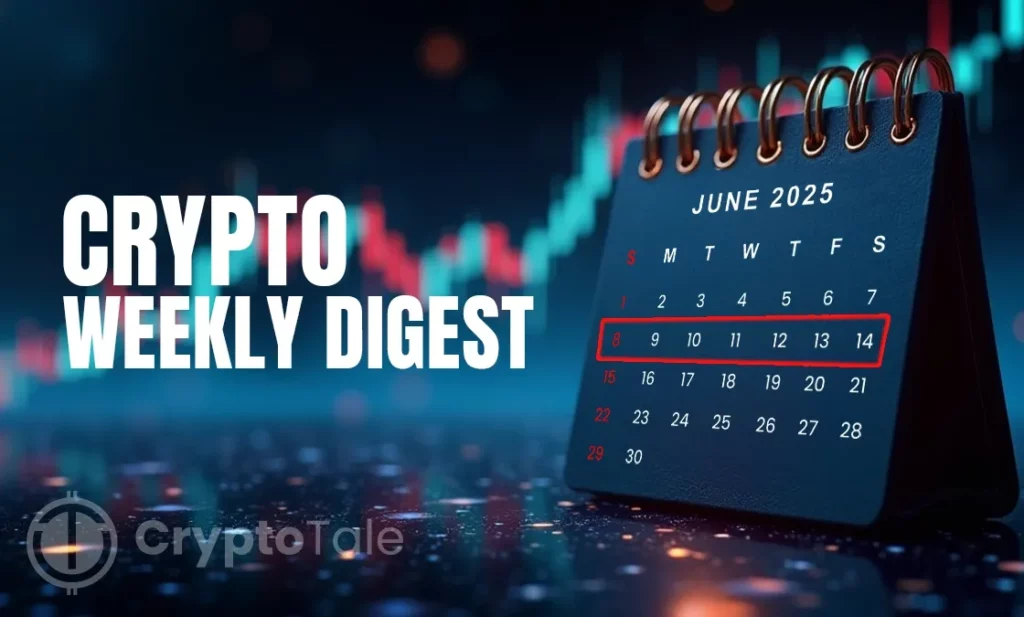
Crypto Weekly Digest, June 16: A Statement From 31 Bitcoin Core Developers Has Sparked Conversations
The past week has been marked by a multitude of significant events and developments in the digital asset market. In this week’s digest, we bring you all the essential news from the world of cryptocurrencies.
First off, Cetus Protocol, a decentralized exchange operating on Sui and Aptos networks, has surprisingly bounced back from its devastating $223 million exploit that occurred on May 22. The team has now completed its full restoration of operations and initiated sophisticated security upgrades. Furthermore, they have started user compensation efforts while announcing plans to fully open-source their codebase to welcome white-hat developers.
The statement by 31 Bitcoin Core developers has garnered immense attention globally. In the document, these key stakeholders reinforced their stance that no authority should dictate updates or alterations. They vigorously opposed auto-updates, emphasizing the importance of users retaining control over their Bitcoin software. This strong declaration signifies their unwavering dedication to decentralization and could potentially shape the direction of future updates across the ecosystem.
In other regulatory news, Coinbase’s Annual Summit has seen Acting CFTC Chair Caroline Pham emphasize that crypto innovation will not serve as a shield for companies from enforcement. She reinforced this stance by stating that firms must still operate legally and ethically even amid Trump administration’s relaxed stance. This reaffirms authorities’ intent to uphold accountability in digital finance.
Recently, Iurii Gugnin, a Russian national aged 38, has been charged with laundering over $530 million through American banks and crypto exchanges while operating under his company Evita. He allegedly utilized stablecoins like USDT. Arrested in New York, he now faces 22 serious counts including wire and bank fraud. This indictment reinforces the close scrutiny crypto is receiving from law enforcement agencies.
The SEC has rejected DeFi Development Corp.’s $1 billion securities filing due to a lack of internal control disclosures within its Form 10-K submission. The firm had planned to use some of the raised capital to buy Solana tokens. As a result, they have been forced to reassess their strategy and plan another submission.
Lastly, Bullish, a crypto exchange backed by Peter Thiel, has filed confidential documents with the SEC for an IPO consideration. The filing allows Bullish to assess interest in such a potential offering without revealing its most detailed financials. It seems that with more welcoming political winds favoring cryptocurrency, this could be a significant move forward in the path towards mainstream crypto adoption beyond the Ethereum bubble.
In addition, Coinbase and Gemini are actively seeking licenses under the EU’s Markets in Crypto-Assets (MiCA) regulations. These licenses would permit full access to all 27 European Union member states. Inner debates have emerged within EU regulators regarding speed and criteria for approving such requests.
On a market overview perspective, Cardano has introduced “Cardinal,” a protocol that enables Bitcoin holders to participate in decentralized finance without giving away their coins. This technology utilizes Wrapped UTXOs and MuSig2 to secure Bitcoin securely and mint assets on the Cardano network. This eliminates custodian involvement and introduces true decentralization in inter-chain DeFi.
Looking at an analytical standpoint, Bitcoin and Ethereum prices plunged precipitously mid-week but have since recovered. BTC now deals with a price of nearly $106K, while ETH operates above $2,570. The rebound suggests that active buyer support has been seen at key levels. If transaction volumes remain high and prices stay put, the markets might continue their ascent. However, if they fall below $105,000 for Bitcoin or $2,500 for Ethereum, this could trigger fresh dips.
Lastly, it was reported that the U.S. Consumer Price Index rose to 2.4% in May, a slight increase from April. The monthly inflation rate came in at 0.1%, helping alleviate fears of overheating. Monthly bond yields have dropped, futures have climbed, and the dollar has weakened.
Source: cryptotale.org


